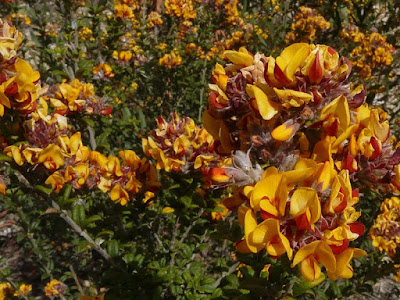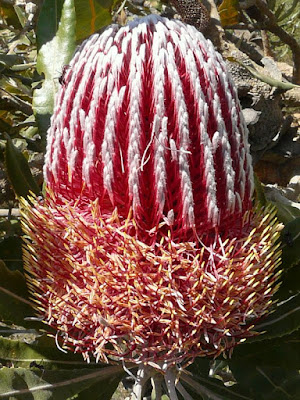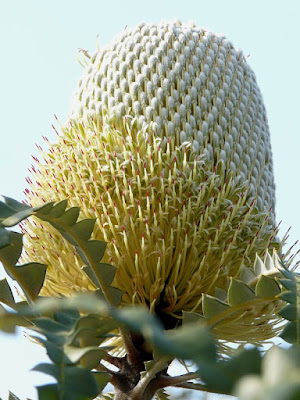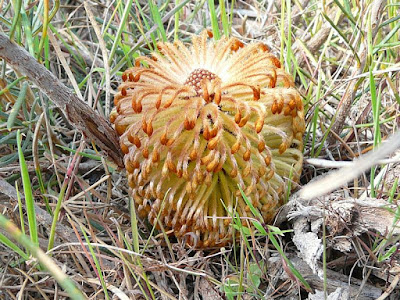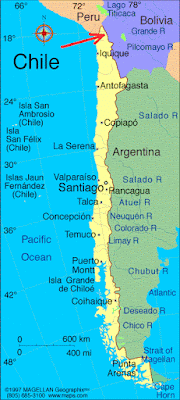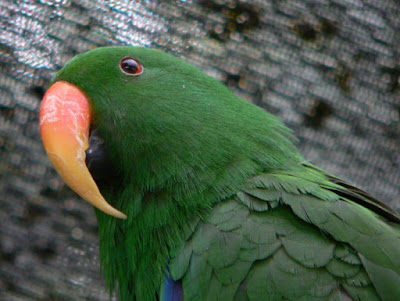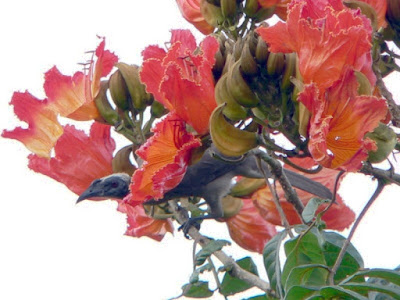As any regular reader of this blog will have noticed, I tend to alternate between featuring a place or area, and then specific animals or plants. This is the turn of the latter, and it feels like time for some birds again. Sometimes the most apparently obvious candidates are the ones overlooked, and pigeons and doves are familiar animals to just about anyone in the world, in one form or another. There are over 300 species in the family Columbidae (now generally regarded as having no close relatives), found across every inhabited continent, from rainforests to high mountains to woodlands to deserts. Their greatest diversity is in Australia and southern and south-eastern Asia.
![]() |
Feral Pigeons Columbia livia Cusco, southern Peru.
This ubiquitous species was originally a cliff dweller, the Rock Dove, around the Mediterranean, before being
domesticated for food and more recently spread throughout the world. |
|
The distinction between pigeons and doves is completely arbitrary (the familiar Feral Pigeon is widely known as Rock Dove, remember), though 'dove' is often retained for smaller, longer-tailed species.
The word 'pigeon' came from the Old French pijon, written variously and first recorded in its current form in England in the late 15th century. Originally it apparently referred to a young dove, though was also used for any young bird. It did not become the generally first-choice term until early 19th century however, gradually replacing terms such as queece, culver and cushat, and in part replacing the older 'dove', which by contrast was of Old English origin. It was apparently from an onomatopoeic word since lost, but presumed to resemble dufe.
Characteristics include a relatively small head on a short neck, compact body, short legs, bare skin around the eyes, and a short slender bill with a constriction in the middle, the pinched shape exacerbated by a cere, soft swollen skin at the base.
![]() |
This Bare-faced Ground-Dove Metriopelia ceciliae, in Socomora in the high Atacama Desert of northern Chile,
illustrates well the essential elements of the family. |
![]() |
This Galápagos Dove Zenaida galapagoensis, in the port of Puerto Ayora,
is modelling the standard pigeon feet, with three toes forward and one back, like a passerine.
This is an excellent - though not the only - form for perching. |
Pigeons have a couple of tricks only shared by a couple of other bird groups. One is in drinking; most birds can only take in water a tiny billful at a time, dipping the lower mandible in and tipping back the head repeatedly. This prolongs the time spent at risk from predators, in the open on the water's edge. Pigeons however have learnt to suck, so they can keep the bill down in the water and take their fill quickly. They do it by creating a sort of peristaltic pump by sending waves of muscular contractions along the oesophagus to pull the water back. (The other group of bird 'suckers' is that of the grass finches, many of which achieve the same result by a quite different mechanism, using their tongues as a double-action scoop, at up to twenty times a second.)
![]() |
Bar-shouldered Doves Geopelia humeralis, Idalia NP, central Queensland;
the bill can be, as here, submerged to the eyes. |
![]() |
| Peaceful Dove Geopelia placida (barred wings and blueish eye-ring) and Diamond Doves G. cuneata, (spotted wings and red eye-ring) near Mount Isa, north-west Queensland. |
In addition to its time efficiency, this drinking method enables pigeons to access tiny water sources like shallow puddles and water in crevices not readily available to suck-drinkers.
![]() |
| Bar-shouldered Doves drinking from a film of surface water, Batchelor, Northern Territory. |
The other area where pigeons really distinguish themselves is in the production of pigeon 'milk'; of course it's not really milk - that's a mammalian prerogative - but it is a liquid protein food for young animals. Unlike mammalian milk it's produced from the lining of the crop, and it's produced by both sexes. (Flamingos do the same thing, though theirs comes from glands throughout the entire upper digestive tract; it has more fat and less protein than pigeon milk. In emergencies male - and only male - Emperor Penguins can also produce it for a short time, from the oesophagus.)
Pigeon nests tend to be flimsy - from beneath one can often see the egg through the lattice of sticks. Clutch sizes tend to be small, varying from one to three. Fruit-eating pigeons have smaller clutches - obligate fructivores have only one (fruit being low energy food). Green-pigeons eat seed as well as fruit, and lay two eggs.
![]() |
| Common Bronzewing Phaps chalcoptera nest on tree ledge, near Forbes, New South Wales. |
![]() |
| Crested Pigeon Ocyphaps lophota nest, Canberra. |
Courtship methods vary widely. Many use dramatic display flights, including clapping the wings loudly in the air, and exaggerated rocking, gliding descents with wings angled upwards, sometimes followed by elaborate ground displays. Others however, including many Australian species, stick to the ground displays. The 'bow coo' display is common to many pigeons, which sums up the male's performance - deep courteous bows, each one followed by an equivalently deep 'COO'.
![]() |
| Crested Pigeons displaying (above and below), in a carpark, Erldunda, Northern Territory. |
![]() |
Spinifex Pigeon Geophaps plumiferadisplaying, West MacDonnell Ranges, central Australia.
The object of his desire is out of our sight behind the spinifex grass clump.
These two are the only Australian species with an erect crest, though some species
elsewhere in the world are likewise ornamented. |
A pigeon's flight tends to be fast and direct, aided by a generally large wing area. The wing shape however varies with the lifestyle of the bird. A pigeon which conforms to the 'fast and far' generalisation is likely to have longer and slenderer wings, while a ground-dweller which relies on an explosive take-off in emergencies is likely to have shorter rounder ones.
![]() |
Spot-winged Pigeon Patagioenas maculosa, Socorama, northern Chile.
This bird flies powerfully between feeding sites in its open scrubby habitat. |
![]() |
Diamond Dove, West MaccDonnell Ranges, central Australia.
A small ground-feeding dove which needs to be able to take off fast when raptors appear. |
![]() |
| It doesn't always work of course; this Australian Hobby Falco longipennis, was too fast or too cunning for this unfortunate Diamond Dove, Karumba, tropical Queensland. |
A pigeon has very large breast muscles - up to 45% of body weight in some species, well above that of most other birds (mostly in the 15-25% range). Fast flyers will not necessarily need a long tail as a rudder; this need increases for birds making rapid changes of direction, such as a bird likely to be pursued in a forest. The cuckoo-doves of Asia and Australia are a good case in point.
![]() |
| Brown Cuckoo-Dove Macropygia amboinensis, north Queensland. |
Pigeons overall have not fared very well from humans (though some generalists have benefitted greatly from our alteration of habitats). The extraordinary destruction of every last Passenger Pigeon Ectopistes migratorius, a species measured in the many billions in the United States and Canada into the late 19th century, is well-known to most readers of this blog I imagine. Migrating flocks in the 1860s were reported to be close to 500km long and up to 1.5km wide; I'll pause and try to consider that with you. Severe habitat loss threatened them along with enormous shooting expeditions. By 1914 every single one had been slaughtered, mostly for fun. However at least seven other species have also fallen into the black hole of extinction, in addition to the closely related giant flightless Dodo and two Solitaire species, from remote Indian Ocean islands. Moreover another 24 species are Endangered, 9 of them Critically. Overall 61 pigeon species are listed in some category of Threatened; frighteningly, another 40 are listed as Near Threatened - ie in danger of being threatened with extinction if remedial action is not taken. That is 20% of all pigeon and dove species are at very real risk of slipping from the world, and a third overall are at some risk.
![]() |
It is hard to conceive that this beautiful bird, not much more than a hundred years ago was one
of the most abundant birds on earth.
Mounted male Passenger Pigeon, Field Museum of Natural History, Chicago. Courtesy Wikipedia. |
That's a grim note to end on, but there's far too much to say about this fascinating and attractive group of birds in one posting, so I'll be back next time for a journey through the world of pigeons, introducing groups and species from four continents. I'm tempted to call it a Cook's Tour, but that would be too insensitive...
BACK ON THURSDAY













